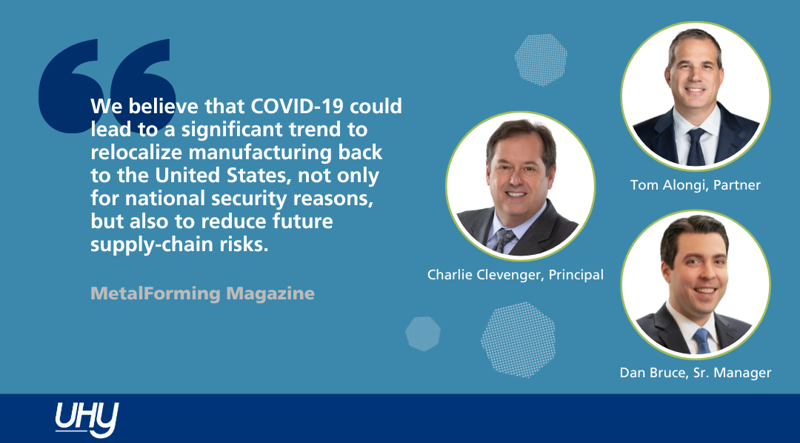In 2022, the Precision Metalforming Association (PMA) celebrates 80 years serving as the only North American trade association committed to developing networking events aimed at helping metal formers and fabricators expand their businesses; providing technical training programs; amplifying the industry’s voice in Washington, D.C.; and regularly publishing industry data to help companies forecast their business decisions. While recent headwinds have created hurdles of the magnitude perhaps never experienced before, metal forming company leaders able to face these challenges head on—strategically and aggressively—undoubtedly will prepare their organizations for what lies ahead.
For perspectives from industry insiders, PMA discussed with a team of industry professionals from UHY the threats small to midsized manufacturers will face in the coming years, and opportunities that lie ahead. And solicited input from several executives from long-time metal forming companies to uncover the strategies that have allowed them to thrive during recent years, and that will set the stage for continued success.
Preparing for a Fast-Paced Future
During the last 30 years, manufacturing employment has spiraled downward, as productivity climbed. Beginning in 2000 or so, globalization began to take hold and manufacturers “have been in a race to the bottom ever since,” says Tom Alongi, UHY partner and national manufacturing-industry practice leader. “This had small to midsized U.S. manufacturing companies competing against the world, driving efforts to increase their use of automation, implement lean-manufacturing strategies and take other steps to wring out costs.
“However, COVID-19 turned on a light bulb for many U.S. companies,” Alongi continues, “changing the landscape considerably due to supply-chain disruption. Everyone began to realize we just don’t manufacture certain critical products in the United States anymore. We believe that COVID-19 could lead to a significant trend to relocalize manufacturing back to the United States, not only for national security reasons but also to reduce future supply-chain risks. The big question: What will be the ultimate impact on costs to consumers? In our view, costs likely are to increase because of the potential risk of deglobalization.”
The near-shoring movement has U.S. metal formers and fabricators engaged in a race to scale, creating a large gap in the skilled-labor ranks as most companies see opportunities to grow, but lack the people to allow them to do so.
Read the full article, including insight on operational excellence from UHY's Charlie Clevenger and strategic planning from UHY's Dan Bruce, originally published in the MetalForming Magazine.
By submitting this form, you agree to be contacted by UHY.







